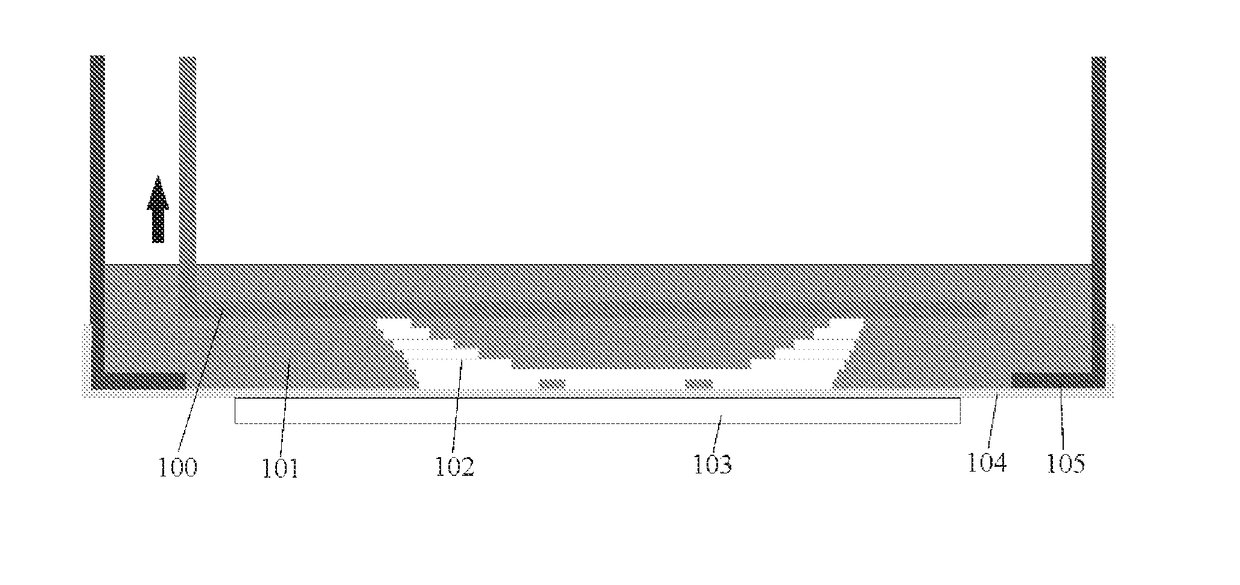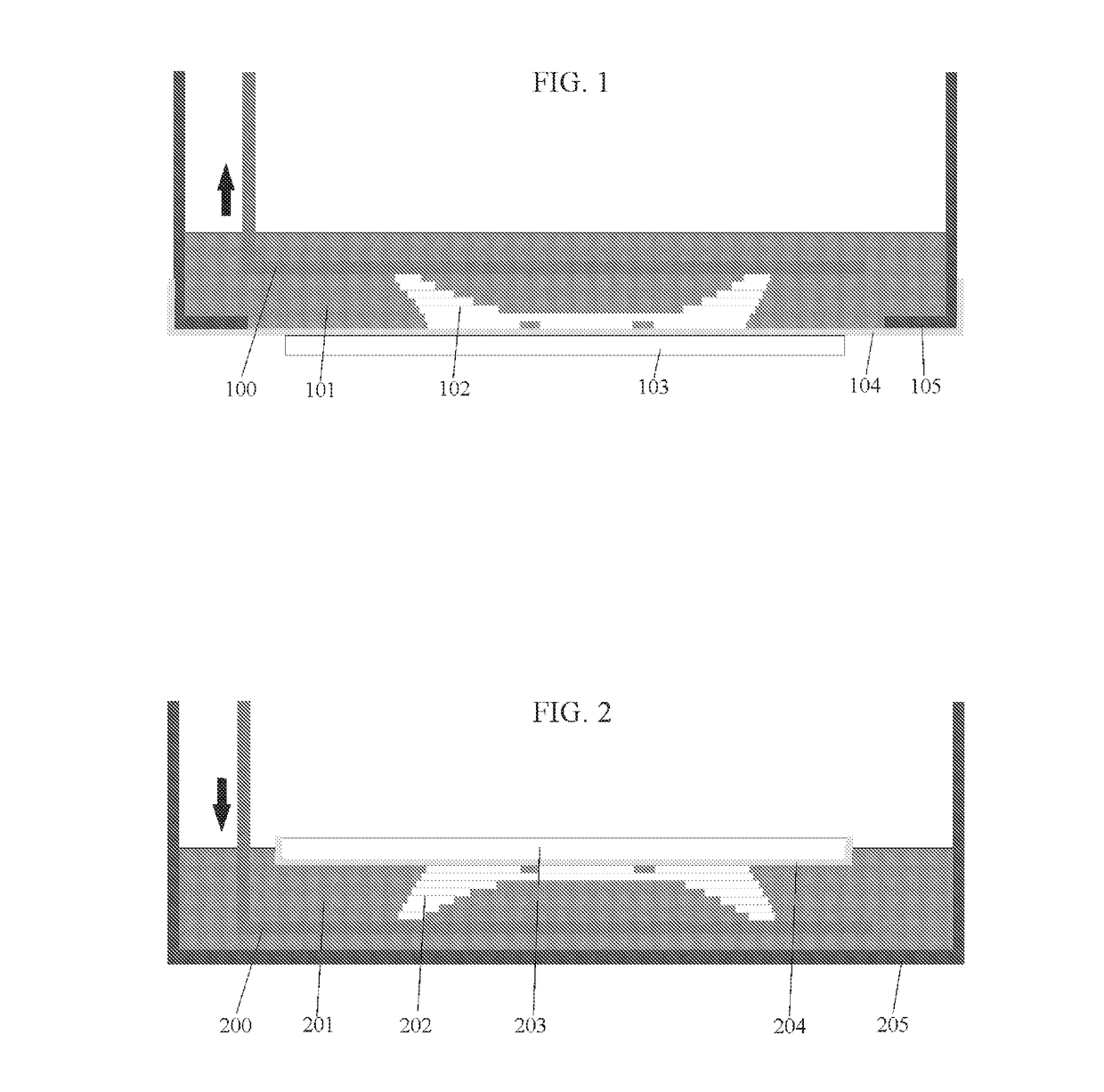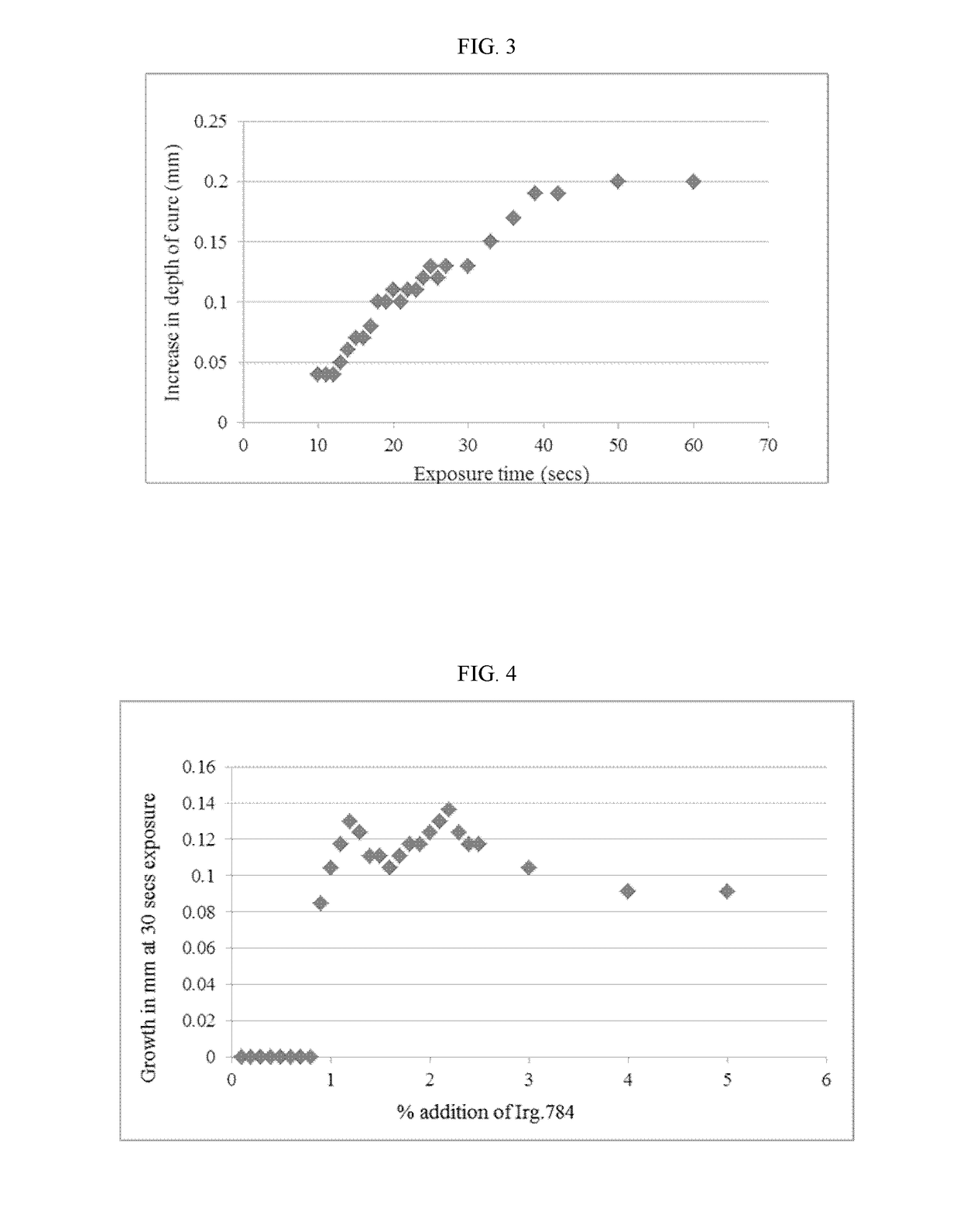Methods For Making An Object And Formulations For Use In Said Methods
- Summary
- Abstract
- Description
- Claims
- Application Information
AI Technical Summary
Benefits of technology
Problems solved by technology
Method used
Image
Examples
example 1
ase of Depth of Cure with Increased Exposure Time
[0127]In this experiment the LCD screen used in the Liquid Crystal 3D printer was a 7″ rear view reversing display screen, known as screen D. This screen had a manufacturer's quoted brightness of 250 candela, however it was measured at 197 candela using a Konica Minolta LS110 luminance meter, by turning the screen on to show a completely white display and holding the meter on the screen in a darkened room. The screen had 800×480 pixels generating 133 pixels per inch (PPI). The image was sent from the computer to the screen via a video graphics array (VGA) input.
[0128]The standard daylight procedure described earlier was used. The print platform was removed after the required set of exposure cycles and the thickness of layer created was measured. The exposure time was adjusted and the results are shown in Table 2 and graphically in FIG. 3.
TABLE 2the amount of polymer growth with increasedtime using the Formulation A.TimeThickness(sec)(...
example 2
g the Addition of Irg.784
[0130]To investigate how the rate of cure is influenced by the level of Irg.784, the standard formulation without any Irg.784 was taken. To it was added 0.1% addition of Irg.784 and then this was separately increased by 0.1% increments. The mixtures were stirred in a glass vessel for 60 minutes at 60° C. and left to stand for 24 hours to allow all the air to either break the surface or be absorbed. This process was used for all future raw material additions. The formulations were tested for growth at various exposure times in the Liquid Crystal 3D printer with screen D inserted as the imaging source using the standard procedure described earlier. The results are laid out in Table 3 and shown graphically in FIG. 4.
TABLE 3the amount of growth at 30 seconds exposurewith different % additions of Irg.784.% additionalGrowth with 30of Irg 784secs exposure0.10.000.20.000.30.000.40.000.50.000.60.000.70.000.80.080.90.1010.121.10.131.20.121.30.111.40.111.50.101.60.111....
example 3
t of Increased Time with Different % Additions of Irg.784
[0132]The standard formulation was used, but with the concentration of Irg.784 set at three levels 1.1%, 2.1% and 3.1%. They were tested for rate of growth at various exposure times in the Liquid Crystal 3D printer with screen D inserted as the imaging source using the standard procedure described earlier. The rate of growth at different exposure times was determined at these concentrations. The results are laid out in Table 4 and shown graphically in FIG. 5.
TABLE 4Growth in mm of polymer at different exposuretimes with different % of Irg.784Time(secs)1.1% 7842.1% 7843.1% 7847.50.000.000.0010.00.000.040.0312.50.040.070.0515.00.090.090.0717.50.100.100.0820.00.120.110.0922.50.130.120.0925.00.150.130.0927.50.190.140.1030.00.200.140.1132.50.210.160.1335.00.220.160.14
[0133]It was found that at the lowest 1.1% Irg.784 level the required time to initiate growth is longer than for the higher concentrations, as would be expected. What ...
PUM
| Property | Measurement | Unit |
|---|---|---|
| Luminescence | aaaaa | aaaaa |
| Luminescence | aaaaa | aaaaa |
| Shrinkage | aaaaa | aaaaa |
Abstract
Description
Claims
Application Information
 Login to View More
Login to View More - R&D
- Intellectual Property
- Life Sciences
- Materials
- Tech Scout
- Unparalleled Data Quality
- Higher Quality Content
- 60% Fewer Hallucinations
Browse by: Latest US Patents, China's latest patents, Technical Efficacy Thesaurus, Application Domain, Technology Topic, Popular Technical Reports.
© 2025 PatSnap. All rights reserved.Legal|Privacy policy|Modern Slavery Act Transparency Statement|Sitemap|About US| Contact US: help@patsnap.com



